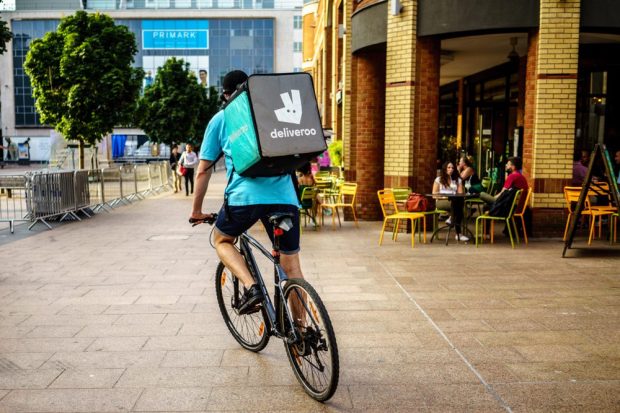Deliveroo’s Orders Drop by 7 Million as Consumers Cut Back

With rising price pressures worldwide, aggregators are seeing consumers cut back.
United Kingdom-based food delivery aggregator Deliveroo shared in its first quarter financial report Thursday (April 20) that orders fell by 7 million year over year, down to 72 million from 79 million. Additionally, average monthly consumers fell by 500,000 in the same period, from 7.6 million to 7.1 million.
“Revenue growth of 4% and broadly flat GTV (both in constant currency) represents a resilient performance, particularly in the context of inflationary pressures and the ongoing cost of living crisis and against a challenging comparison base,” CEO Will Shu said in a statement, adding that the company “remain[s] confident in our ability to deliver on our plans to drive profitable growth and sustainable cash generation.”
The news comes just one day after competitor Just Eat Takeaway.com reported in a presentation Wednesday (April 19) that, in its most recent quarter, the multinational aggregator saw orders fall by 14% year over year, from 263 million to 228 million. However, unlike Deliveroo, the Netherlands-based aggregator attributed this decline to the continued impact of the pandemic, with CEO Jitse Groen arguing on the company’s earnings call that the impact of the cost-of-living increase is unmeasurable.
Yet PYMNTS research reveals that consumers do indeed cut back on food delivery orders when prices rise if United States consumers are any indication. Research from PYMNTS’ February study “Connected Dining: Rising Costs Push Consumers Toward Pickup,” for which we surveyed a census-balanced panel of more than 2,100 United States consumers in January, revealed that nearly half of all consumers (48%) have become more likely to pick their restaurant orders up themselves rather than have them delivered because of inflation.
As such, aggregators have been put in a position where, despite the already narrow margins of the model, they must find ways to lower costs for consumers.
“On the affordability side, … we’ve taken down transaction costs for consumers by about 8% in the past year, and we’re always trying to drive this down,” Tony Xu, CEO of leading U.S. aggregator DoorDash, told analysts on the company’s most recent earnings call. “When it comes to affordability, certainly, DashPass [the aggregator’s delivery subscription] has been a big driver, … but at the same time, we’re working on quite a lot of other initiatives as well to make sure that we can keep making the service more and more affordable.”
Indeed, the vast majority of diners have made changes to their restaurant spending in response to rising prices, per Research from PYMNTS’ study The 2022 Restaurant Digital Divide: Restaurant Customers React To Rising Costs, Declining Service, which draws from a survey of more than 2,300 consumers who regularly purchase food from restaurants. Eighty-eight percent of millennials and Generation Z consumers, 87% of bridge millennials and 85% of Generation X consumers reported making such changes, and three-quarters of baby boomers and seniors.

